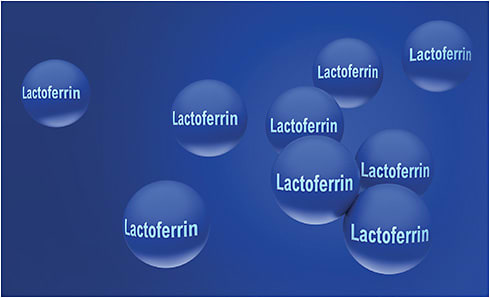What is it, and how can ODs use it?

Many different tests, such as tear osmolarity, and biological markers, such as inflammation, are available to help determine the severity of dry eye disease (DED) and potential treatments. This column discusses the lesser-known diagnostic biomarker lactoferrin, in terms of what it is and how to use it for DED diagnosis.
What it is
Lactoferrin is a nonheme, iron-binding glycoprotein that has antimicrobial, anti-inflammatory, and immunomodulary functions.1 Its ability to act as an anti-inflammatory occurs via protection from oxidative stress by depleting free iron and inhibiting the pro-inflammatory effects of hydroxyl radicals.1,2 (Spoiler alert: Lactoferrin is also being looked as a direct treatment for DED!3)
Lactoferrin is found in many different mucosal secretions, including tears. Additionally, concentration levels have been studied in both healthy patients and in patients who have DED, among other ocular diseases, such as diabetic retinopathy.1
DED diagnostic use
Studies consistently show that patients who have ocular diseases have a lower concentration of lactoferrin vs. the concentration in healthy patients.1 Specifically, low levels of lactoferrin within tears have been shown to correlate directly to aqueous deficiency and the decrease in tear production from the lacrimal gland.3
Therefore, knowing a patient’s lactoferrin level could aid optometrists in deciding whether a patient is suffering from meibomian gland dysfunction (MGD) alone, or both aqueous deficiency and MGD. This would, obviously, then dictate the direction of treatment for the patient, leading to a decrease in chair time, co-pays for the patient, as well as reduced doctor and patient frustration.
Something else to consider: Low levels of lactoferrin, indicating suppressed lacrimal function, could mean a risk of contact lens dehydration, leading to discomfort and dropout.1 Further, high levels of lactoferrin indicate elevated tear proteins, which could lead to excessive contact lens deposits, causing visual disruption, contact lens discomfort, and dropout.2
The good news: Within the last year, office tear-based point-of-care quantitative testing platforms for lactoferrin have been released. There is currently one option, along with IgE testing, from Verséa Ophthalmics, with more in development.
Another diagnostic tool
I believe that user-friendly testing that has minimal-to-no footprint and could lead to impactful information regarding DED treatment, makes testing for this biomarker a no brainer to add to one’s dry eye clinic protocol. OM
References
- Ponzini E, Scotti L, Grandori R, Tavazzi S, Zambon A. Lactoferrin Concentration in Human Tears and Ocular Diseases: A Meta-Analysis. Invest Ophthalmol Vis Sci. 2020 Oct 1;61(12):9. doi: 10.1167/iovs.61.12.9.
- Flanagan JL, Wilcox MDP. Role of lactoferrin in the tear film. Biochimie. 2009;91(1):35-43.doi: 10.1016/j.biochi.2008.07.007.
- Vagge A, Senni C, Bernabei F, et al. Therapeutic Effects of Lactoferrin in Ocular Diseases: From Dry Eye Disease to Infections. Int J Mol Sci. 2020;21(18):6668. doi: 10.3390/ijms21186668.




